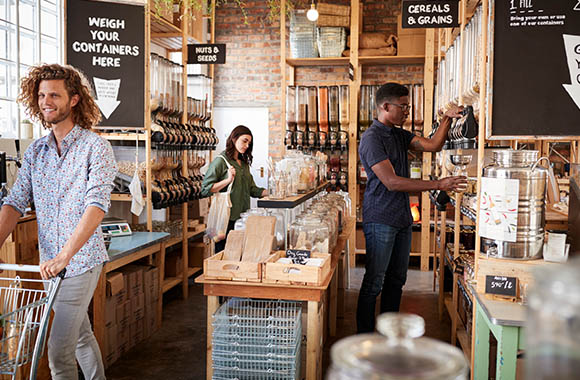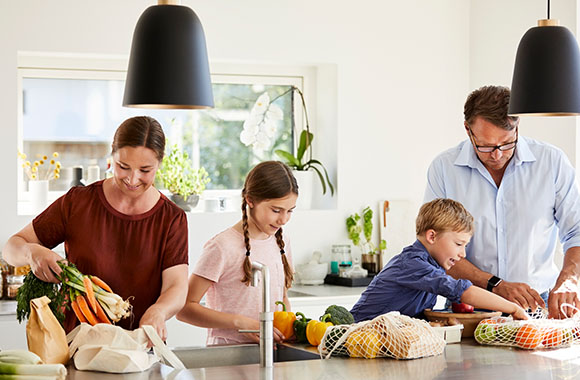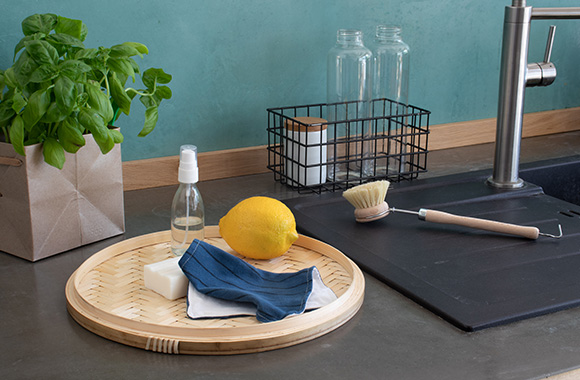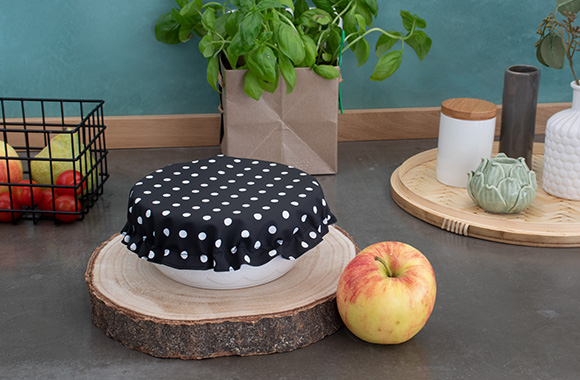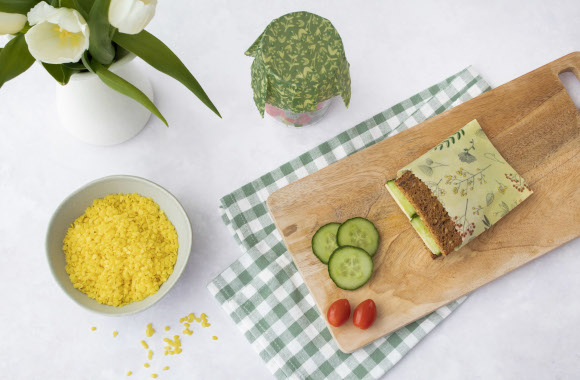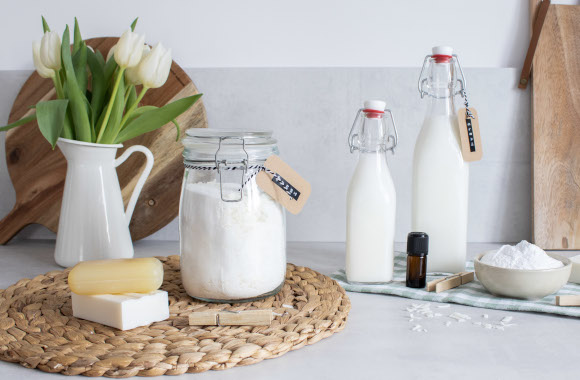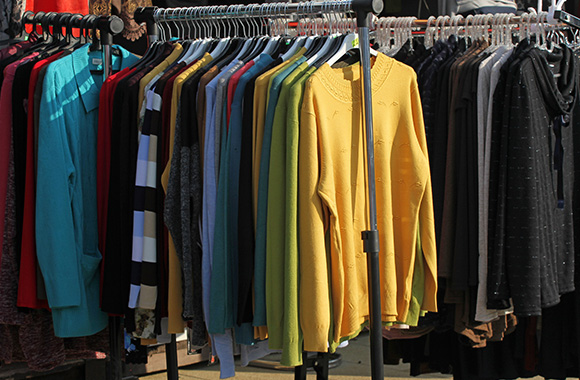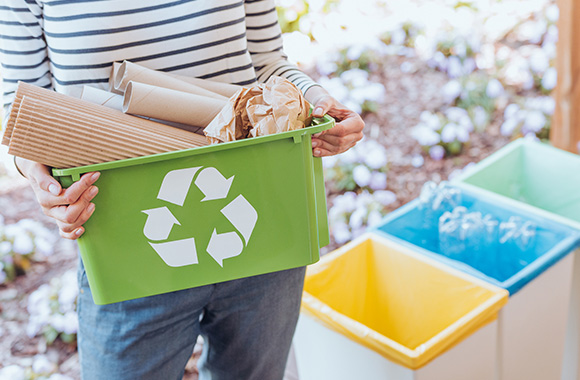Reusable lunch bag: upcycling an old raincoat
Long car journeys, school trips and everyday office life often have one thing in common: the lunch bag! Paper bags are not always strong enough to stop your sandwich from falling apart and they create a lot of waste over time. Chopped fruit or vegetables can make the bag become soggy and even a crispy bread crust can cause thin paper bags to tear.
The solution is sustainable and simple: you can make your own reusable lunch bags from an old raincoat in just a few easy steps! The water-repellent material of a raincoat is ideal for storing your lunch and it is extremely sturdy and washable. Your homemade lunch bag will be long lasting – and it is a lot more sustainable.
How to make a lunch bag out of an old raincoat
DIY lunch bags are as useful as bowl covers for keeping your food fresh either for work or on days out. The material of the raincoat is perfect for your DIY lunch bag because of its strength and water resistance. If you don’t have an old raincoat, then you could use other suitable materials, such as an oilcloth tablecloth.
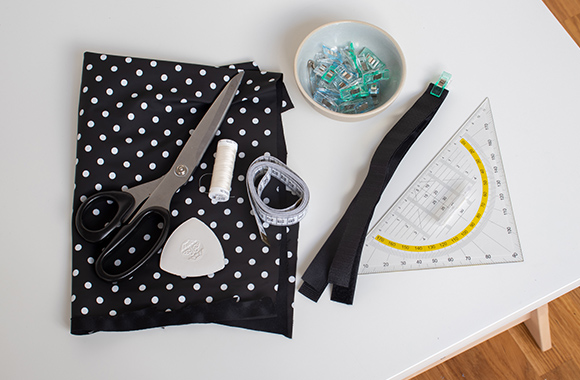
Materials for a reusable lunch bag
To make your own DIY lunch bag you will need:
- Sewing machine
- An old raincoat
- About 10 cm of Velcro fastener
- Matching colour thread
- A set square, if not then a ruler
- Fabric scissors
- Measuring tape
- Some clothes pegs and pins
Step-by-step sewing instructions on how to make your own lunch bag
First, the raincoat needs to be cut into individual pieces. Cut out large pieces along the seams of the coat to reduce the amount of fabric being wasted.
Start by cutting out two rectangles from the raincoat, each measuring 50 by 25 centimetres. The seam has already been included in the measurements. Simply draw the outline on the fabric and cut it to size. There is no need to use a template.
Put one of the pieces of fabric on the side for the time being. From the two pieces of cut out fabric, use the best-looking piece, as this will be the visible side on the finished lunch bag.
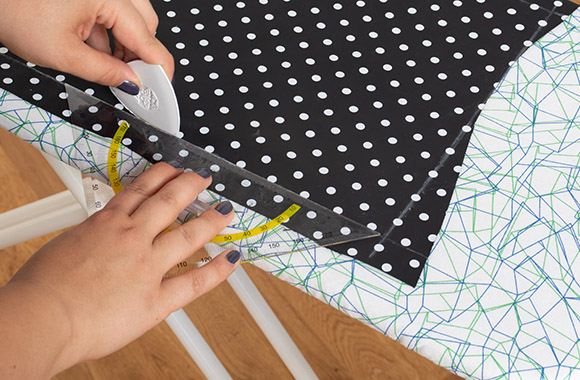
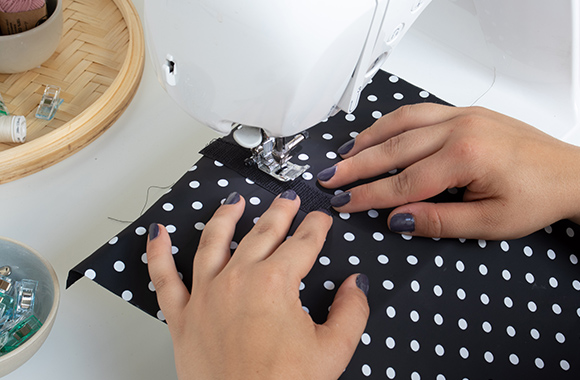
Take the Velcro and separate the two sides. Then fold the rectangular piece in the middle lengthways, so the right side is facing outwards. The folded piece of fabric should now have a square shape. Place one side of the Velcro in the centre, so that it runs parallel to the longer side of the cut out piece of fabric. Keep a distance of three centimetres away from the top edge of the fabric. Next, place the second part of the Velcro in the same way on the other side of the folded piece. The aim is that the Velcro will be folded on the right sides of the fabric so that they meet when folding the fabric together. Using a pin put the Velcro pieces together and sew them into the fabric. Sew around the Velcro once with a sewing machine.
Once the Velcro has been sewn into place, the fabric can be folded again. Fold from the centre of the longer side. This time, make sure that the right sides are facing inwards. Next, close the two open sides by sewing a foot wide along the edges of the sides. Repeat this process with the second piece. Once finished, you will have two simple bags.
Next, take a one of the bags and fold the sides of the seams that you have just sewn towards the centre of the bottom. This will create triangles at the two corners. Now measure 5 cm inwards from the top of the two triangles and draw a horizontal line. Repeat this step for your second little bag. Then sew along the lines you have just drawn and cut off the excess fabric about four to five millimetres from the seam. The bottom side of your DIY lunch bag is now finished.
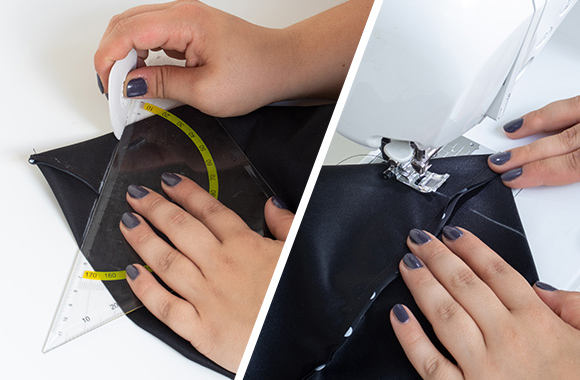
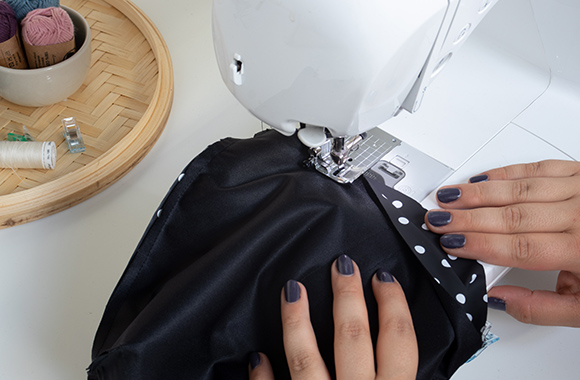
Prepare the two individual lunch bags so that one has the right side of the fabric facing outwards and the other has the left. Now place the two bags inside each other so that the right sides of the fabric are touching. Make sure that the sides of the seams are aligned and then fix them into place with some clothes pegs. Where the side seams meet, make sure the excess fabric is folded in the opposite direction. This prevents too many layers of fabric from overlapping and becoming too thick.
Sew the right sides of your fabric together and then turn the fabric over. This makes the seams disappear, and it will leave no open, messy or frayed edges.
Sew the right sides of your fabric together and then turn the fabric over. This makes the seams disappear, and it will leave no open, messy or frayed edges.
The next step is to stitch the two bags together. Sew along the top edge where the clothes pegs are holding the pieces together. Sew either end of the seams and leave an opening of about five centimetres.
Now turn them inside out through the opening and neatly bring out all the edges. Finally, sew around the top edge. This seam serves as a decorative seam, which strengthens the edges and closes the reversible opening at the same time. Lastly, turn the DIY lunch bag inside out so that the Velcro is on the outside.
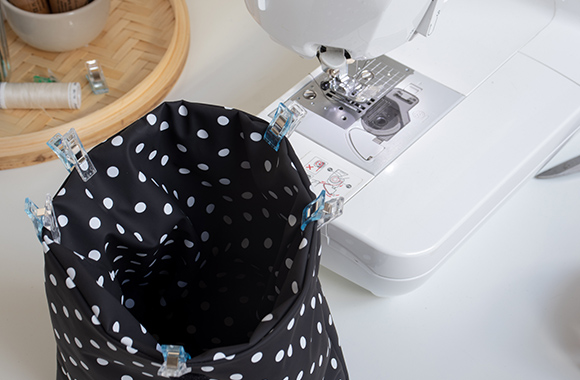
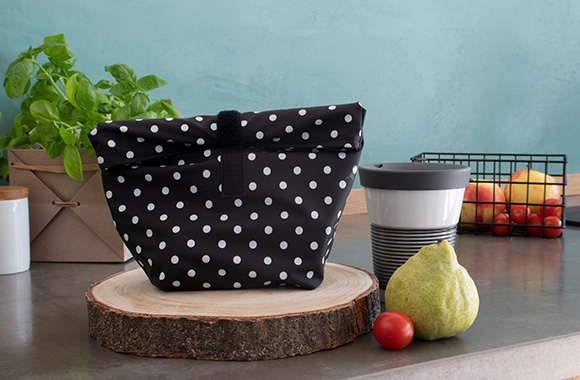
And there you have it, your very own reusable lunch bag. To seal the DIY lunch bag, roll the top part shut. As the reusable lunch bag is waterproof, it's also great for other purposes, such as putting wet swimwear into it after you have been swimming.
Conclusion
It’s quite easy to create useful everyday items from old clothes that you no longer need. By using upcycled clothing, you can make some bowl covers for the kitchen out of all kinds of materials, such as a raincoat. You can also make some useful upcycled cloths out of old clothes. Not only are you reducing your household waste by avoiding disposable products, but you’re also making something new out of something old.

